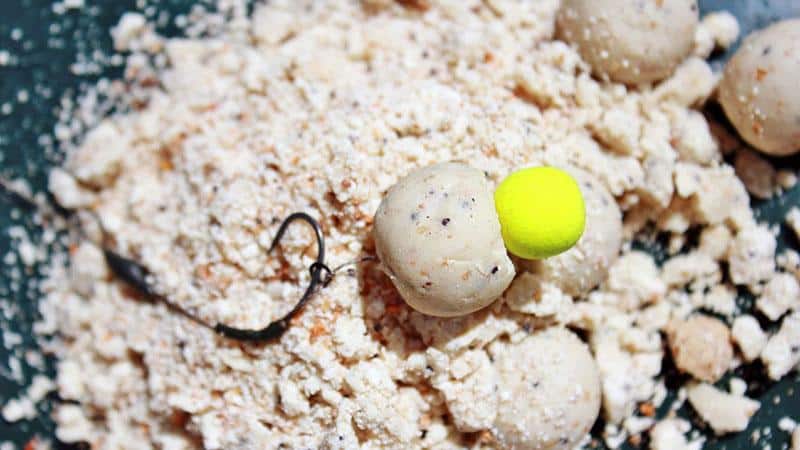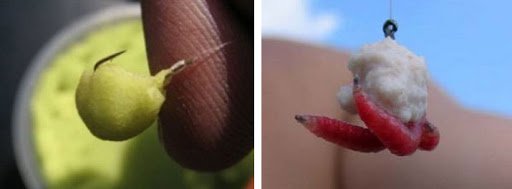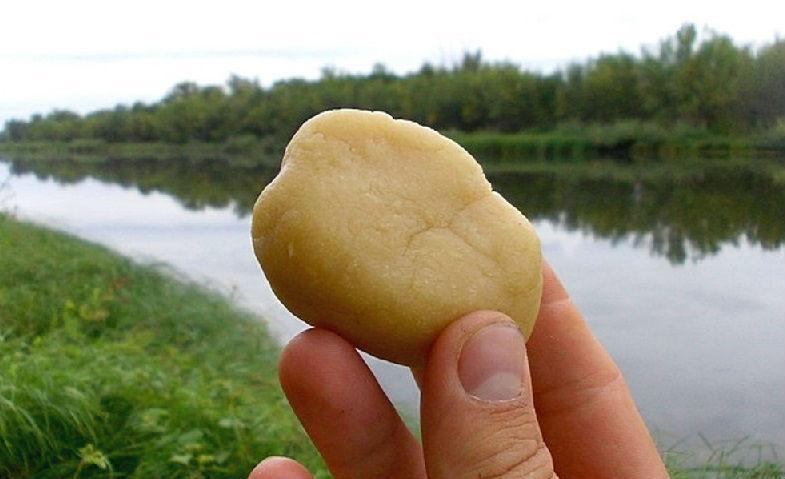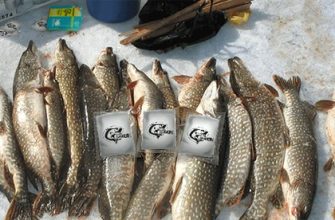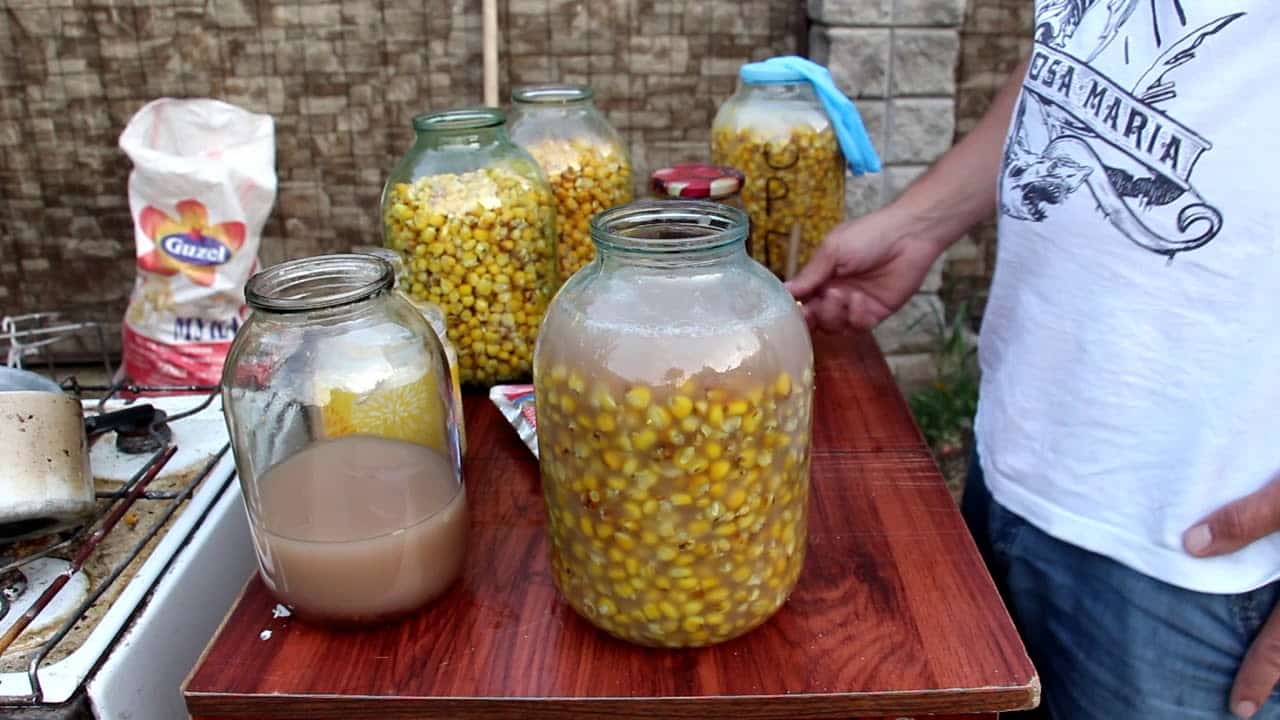The dough is one of the most popular baits among anglers, which is actively used when fishing for peaceful fish. This attachment is generally best suited for tackle such as a
feeder or
float rod . As a nozzle, the dough can be actively used not only raw, but also boiled, rubber, kneaded, or baked. This bait is perfect for fishing such fish as
carp ,
bleak , ide, rudd,
bream ,
crucian carp and roach. It should be noted that it is suitable for capturing other species of peaceful fish that are not predators.
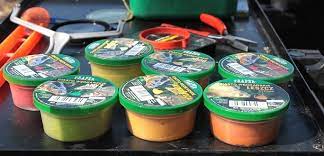
- Fishing dough description
- Advantages and disadvantages
- Things to consider when making a bait
- The use of sugar and salt
- Using flavors
- Adding factions
- Use of dyes
- Recipes – Top 3 Versatile Ways to Make Fish Dough
- Flour-based fishing dough recipe
- Garlic dough for fishing – ingredients and recipe
- Wheat Flour Cooked Fishing Dough Recipe
- How to make your own dough for winter fishing – a recipe for bait for fishing in winter
- Spring and Autumn Fishing Bait Recipe
- Summer fishing dough recipe
- Dough-based bait recipe for catching different types of fish
- Other Popular Fishing Dough Recipes
- Fishing rules
- Поделиться ссылкой:
Fishing dough description
The dough is a common and popular with fishermen attachment, which is actively used when catching peaceful fish species. This is because it is affordable and also easy to prepare. In addition, if the need arises, it can be improved. When fishing for different types of fish, all kinds of additives are added to it, special flavors that enhance the smell and taste, as well as other additional components. Depending on the method of production chosen by the angler, there are several different types of dough, which are actively used as bait for catching fish. Conventionally, such a nozzle can be:
- Raw . Mixes up with water or (in very rare cases) with other liquids. Such a bait is distinguished by its simplicity of preparation and in its consistency it is not much different from ordinary dough, which is used in cooking.
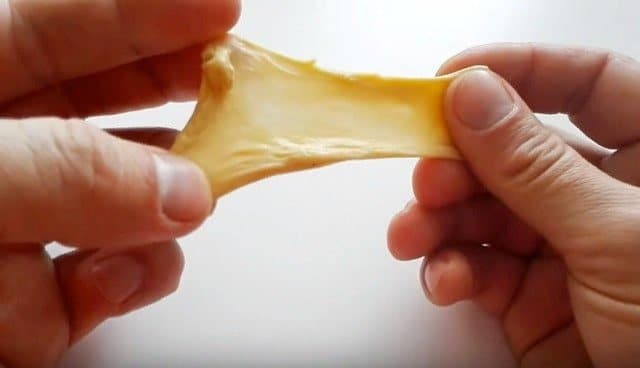
- Boiled . Compared to raw bait, such a nozzle, due to heat treatment, has a different consistency. During its preparation, it is necessary to scald rolled, small balls of dough in boiling water.
- Steamed (prepared in a water bath ). This method of dough preparation is generally used when other ingredients are used instead of wheat flours, which contain a small amount of gluten. Gluten, or as it is also called – gluten, is a special substance due to which the dough acquires an elastic and elastic consistency. Typically, this cooking method is used when corn flour is used as the starting ingredient.
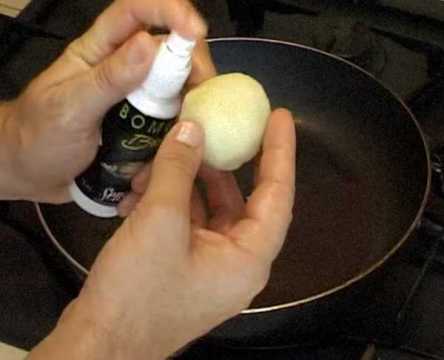
To make such a nozzle the most catchy, a variety of flavors, dyes, additives are added to it. It is worth noting that small fractions of other ingredients (semolina and so on) are often used in the preparation of the dough.
On a note! To prevent boiled balls from sticking to each other during transportation and use, they must be treated with vegetable oil. To do this, a pre-prepared nozzle must be dipped into a container filled with oil.
Advantages and disadvantages
The dough is very popular among anglers, and is often used to catch peace-loving fish. After all, this lure is distinguished by a high level of catchability, especially if fishing is carried out in cool water. However, it, like any other bait that is used while fishing, has both certain advantages and some disadvantages. The advantages of such a bait include:
- after casting, turbidity appears around the bait, which actively attracts the fish to the fishing site;
- the angler can always change the size of the nozzle on the hook, at his discretion, adjusting it to catch a certain type of fish;
- this bait is compatible with a large number of different flavors, additives;
- simplicity and speed of preparation (making such a nozzle is much easier than getting worms or purchasing bloodworms );
- the possibility of using dyes (dyes should be used extremely carefully, because they are capable of both improving and reducing the level of bites);
- ease of transportation, versatility of use (unused dough is stored for a long time in the freezer or it can be rolled out into small pieces, dried, and then used as an ordinary groundbait).

The main disadvantage of this attachment is its unreliable, weak fixation on the hook. She can easily fly off the tackle during a strong cast or when hooking. Therefore, in order to avoid such problems, it is recommended to use special hooks and dough with a more viscous, rubbery and thick consistency. In addition, such a bait, especially when the summer heat is on the street, is poorly stored and begins to deteriorate quickly. If stored improperly, it instantly dries up and gradually begins to lose its properties.
Reference! To help the balls of dough used better hold on to the hook, you can add a small amount of ordinary cotton wool to it. This attachment can be used for long, power casts. In addition, small fish will not be able to knock such bait off the hook during fishing.
Things to consider when making a bait
To improve the catchability of the dough, you can add a variety of flavors, dyes, additives during cooking. Thanks to the use of such additional components, it is possible to change not only the taste, color, and smell, but also the consistency of the dough. In addition, the addition of additional ingredients can affect the behavior of the bait directly under water (flowability, solubility). The most attractive effect that attracts the attention of fish that a dough bait can have is its flowability. In order for it to have such an effect, a ball rolled from dough must be dipped in breadcrumbs before being placed on the hook. Due to this, when the nozzle is under water, it has the effect of flowability, as well as dusting, which actively attracts the underwater inhabitants of reservoirs.
The use of sugar and salt
When preparing the bait, it is recommended to constantly add salt and sugar to it. After all, most underwater inhabitants prefer sweetened baits. In this case, salt acts as a preservative. However, when preparing such bait, it must not be salted. Ingredients such as salt and granulated sugar are best added to the dough in a soluble form. For example, you can first dissolve them in liquid (water), and then add them directly to the flour.
Using flavors
Flavors used during fishing can be dry or vice versa – liquid. Liquid flavors must be added to the dough itself just before it is kneaded. Dry dips should be mixed directly with flour before adding liquid to it. A variety of seasonings and spices can be used as special flavoring agents during the preparation of the nozzle. For example, anise, cinnamon, dill, vanillin, honey or coriander can be added to it to improve catchability. In addition, a variety of essential oils and essences are perfect for preparing such a bait. If necessary, you can purchase special flavored additives from online stores.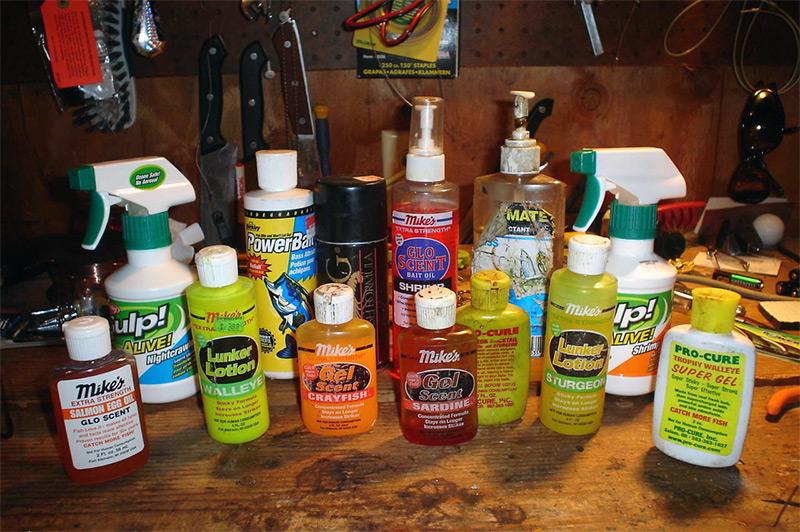
Adding factions
To make the nozzle used have a more attractive appearance for fish, various, small small fractions can be added to it during cooking. For example, the bait will be more catchy if you additionally use bread crumbs, semolina, wheat bran during its preparation. In addition, some anglers add coconut flakes to the bait to make it more catchy.
Use of dyes
You can use any food coloring to color the nozzle made of dough. They should be added to the flour just before kneading or added directly with the liquid. The most catchy pieces of dough are pink, reddish, orange, and yellow.
Note! After cooking, it is recommended to put the dough in a cool place or in the refrigerator for a couple of hours. Thanks to this, its consistency will become more elastic and also much more elastic.
Recipes – Top 3 Versatile Ways to Make Fish Dough
How to make the most catchy dough for fishing? How to choose a recipe for self-preparation of this bait? There is no definite answer to this question. Indeed, when choosing a recipe for preparing such a nozzle, the type of fish is taken into account, as well as the habits of the underwater inhabitants on which the fishing will be carried out. However, it should be remembered that in different reservoirs, for the same type of fish, taste preferences may differ. There are many recipes for making the catchy, most effective dough for fishing. However, one must remember that in every region of the country, and in different bodies of water, some recipes for this bait can be catchy, while others are not.
Flour-based fishing dough recipe
It is the simplest and most well-known common bait recipe. To make such a nozzle, you need to take a little flour and pour it into a container. Then you need to add a small amount of water and mix the contents in the container. Then the resulting dough must be kneaded until its mass becomes homogeneous.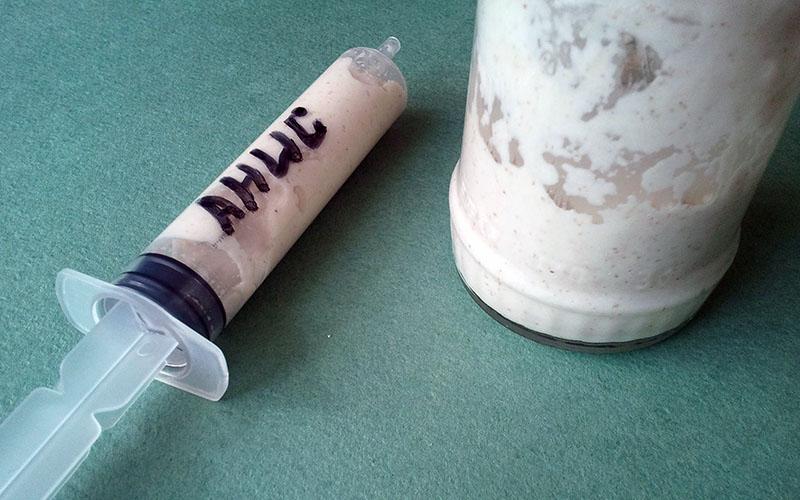
Garlic dough for fishing – ingredients and recipe
The flour needs to be kneaded in water. Then a small amount of cinnamon, sugar, and salt must be added to the resulting substance. This recipe allows the use of additional flavors such as honey, cocoa, chopped dill, garlic juice. This bait is best suited for catching fish such as bream. Chatterbox-garlic dough for fishing – video recipe for fishing carp, crucian carp: https://youtu.be/kimtnQ_lsc8
Wheat Flour Cooked Fishing Dough Recipe
This recipe uses wheat flour as well as milk, egg yolks and honey. In this case, the dough is kneaded not in water, but in milk. Then the rest of the ingredients are added to it. At the next stage of cooking, small balls need to be made from the dough, after which they should be boiled. To prevent the balls from sticking to each other, they need to be greased with sunflower oil. In appearance, such bait is somewhat similar to boilies. It is perfect for catching fish that belong to the carp family.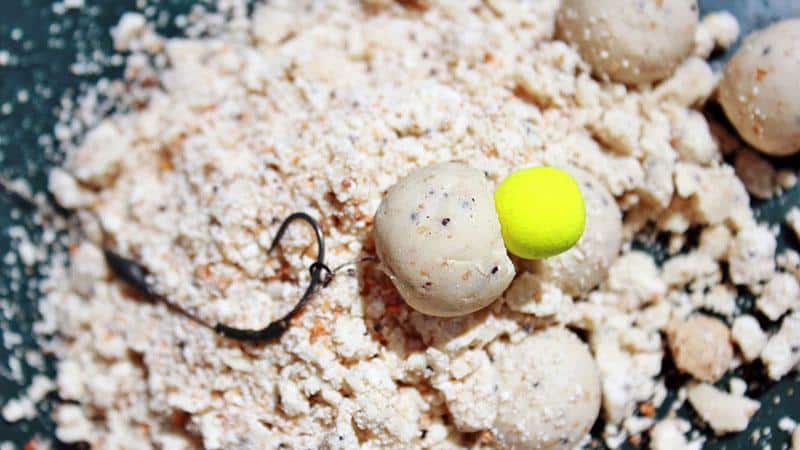
How to make your own dough for winter fishing – a recipe for bait for fishing in winter
In order to have a successful, large catch of fish
in the winter , you should not use a large amount of flavoring when preparing the bait. In this case, it should actively attract and keep the fish in place, and not scare them away. To make a catchy winter bait in the form of a dough, you need to take the following ingredients:
- sugar;
- milk (1/3 cup);
- salt;
- wheat flour);
- garlic.
To prepare the dough for winter fishing, add warmed milk to the container. Then add one pinch of salt and sugar. Then gradually pour a small amount of flour into the container. Flour is added until the substance in the container acquires a jelly-like consistency. At the last stage of cooking, 1 clove of chopped garlic is added to the container.
On a note! Unlike using lures of animal origin during winter fishing, when using the test, the hook must be completely hidden in the bait. Indeed, when using, for example, a
bloodworm , the sting of the hook is left slightly open.
How to knead the dough for winter fishing: https://youtu.be/0m3wo-OFhv8
Spring and Autumn Fishing Bait Recipe
For successful catching of fish in early spring (starting in April), it is preferable to use the so-called batter. It uses water and flour to prepare it. Flavors can also be added to the bait in small quantities. However, in this case, flavors and additives must be used carefully so that they do not scare the fish away. In order to attach such a bait to the hook, a syringe is used. For fishing in the fall, it is recommended to use bait made from wheat and corn flour. To prepare it you need to take:
- 2/3 wheat flour;
- 1/3 corn flour;
- sugar (2 teaspoons);
- vanillin (1-2 sachets).
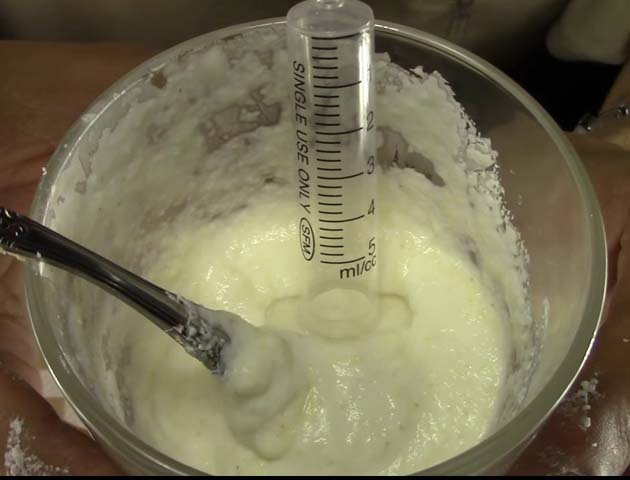
First, add water, sugar and vanillin to the container. Then you need to mix the flour with each other and add it to the container. Then the dough must be kneaded and rolled into small balls. At the next stage, the balls must be boiled in water until they begin to float. After that, they must be removed and dried using a slotted spoon. However, they should not be overdried. The consistency of the bait should allow it to be hooked without any problems. Fishing semolina dough in a syringe – cooking recipe video: https://youtu.be/SXguWnBU7aA
Summer fishing dough recipe
The dough is perfect for catching different types of fish in the summer. To prepare the most catchy bait, you will need the following ingredients:
- powdered milk (2 parts);
- semolina (3 parts);
- corn flour (2 parts);
- soy flour (1 part);
- cake (2 parts);
- chicken eggs (for 500 grams of dry mixture – 10 pieces).
To prepare such bait, you need to take eggs and place them in a container. If liquid flavors are to be used, they must be added directly to the eggs. Dry flavors are added to the flour. Then the prepared dry mixture must be placed in an egg solution and mixed. Balls must be formed from the mixed mass. Some experienced anglers recommend using strawberry flavor (add 1-2 drops directly to the eggs before mixing). How to make washed, indestructible rubber dough for fishing – video recipe: https://youtu.be/dvzdOUvb5fw
Dough-based bait recipe for catching different types of fish
For catching large, mature fish (bream, carp), it is preferable to use a dough with garlic. When preparing it, add a small amount of garlic juice to a container with flour and water. After that, the resulting mixture must be thoroughly mixed. To catch crucian carp, it is best to use the so-called perfect semolina dough, in which semolina is used instead of flour. Pea dough is perfect for catching fish like bream. In addition, you can catch crucian carp and carp with it. To prepare it, you need to take peas and boil them. Then the peas need to be mashed so that they resemble porridge in their consistency. At the next stage, the resulting gruel must be added to the finished dough made from water and flour in a ratio of 1 part of porridge to 2/3 of the dough.
Other Popular Fishing Dough Recipes
An effective bait is dough made with sunflower oil. To prepare such a bait, you need to take a few drops of sunflower oil (refined) and add it to a mixture of water and flour. Then the resulting lump of bait must be kneaded and formed into balls. The bait made from sunflower seeds demonstrates high catchability. To prepare it, you need to take dried sunflower seeds and grind them in a coffee grinder. Then the resulting substance must be added to a container with water and flour and mixed. Instead of seeds, you can actively use sunflower cake. Airy dough for fishing with your own hands – cooking and recipe for a cook (ottoman) for fishing roach, bream, carp and other peaceful fish: https://youtu.be/CAoj6nbBDkg
Fishing rules
The dough is a great bait for catching white fish. It is perfect for catching bleak, tench, rudd, roach, as well as crucian carp, carp. Before use, it must be properly wrinkled. Then you need to pinch off a small piece from the total mass and form a ball out of it.